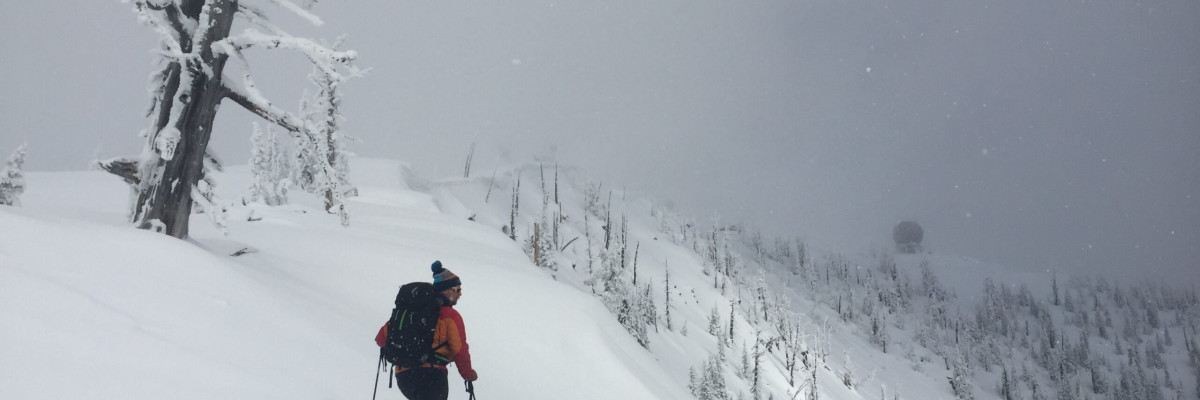The current avalanche danger is MODERATE in the west central Montana backcountry above 6000 feet. Evaluate snow and terrain carefully; identify features of concern. Human triggered avalanches are possible. Below 6000 ft the avalanche danger is LOW.
Good morning, this is Travis Craft with the West Central Montana Avalanche Center’s avalanche advisory for February 25, 2017. This danger rating does not apply to operating ski areas, expires at midnight tonight and is the sole responsibility of the U.S. Forest Service.
Weather and Snowpack
Mountain temperatures range from 5 F to 18 F in the region. Winds are 2 mph with gusts of 4 mph out of the W in the Bitterroot. Point Six, in the northern part of the advisory area, winds are reading calm. The forecast area received 1 to 2 inches of new snow in the last 24 hours. The new snow had SWE’s ranging from .1 to .2 inches of water.
Logan and I toured in the Rattlesnake yesterday. We were not able to get any of our persistent weak layers to propagate. The storm snow is bonding to the old snow surfaces. We did observe some loose dry sluffs. Tim was at Downing Mountain Lodge in the central Bitterroot and found the storm snow was settling out.
The primary avalanche concern is persistent slabs. There are weak layers in our snowpack, these layers (graupel, near surface facets, and different crusts) have not propagated in our pit tests. Dig a pit to see if these layers are reactive before committing to a steep slope.
The second avalanche concern is loose dry releases on steep terrain. These should not be a problem to manage unless they knock you down and carry you into a terrain trap.
The final avalanche problem is wind slabs. These slabs are very stubborn to trigger. Wind slabs are in isolated areas in the region. Identify these slopes and avoid them.
Avalanche and Weather Outlook
Light mountain showers today until a cold front moves into the area on Sunday. This cold front will bring 3 to 7 inches of new snow to the mid elevations and up to 12 inches to the higher elevations. Wind is expected to accompany this front. Temperatures will remain cooler and expect additional accumulations on Monday. The cooler temperatures will keep this snow low density. With these conditions expect the avalanche danger to increase.
If you are out in the backcountry, please send us your observations, these are very helpful in producing the advisory. I will issue the next advisory on February 28, 2017.
Ski and ride safe.














